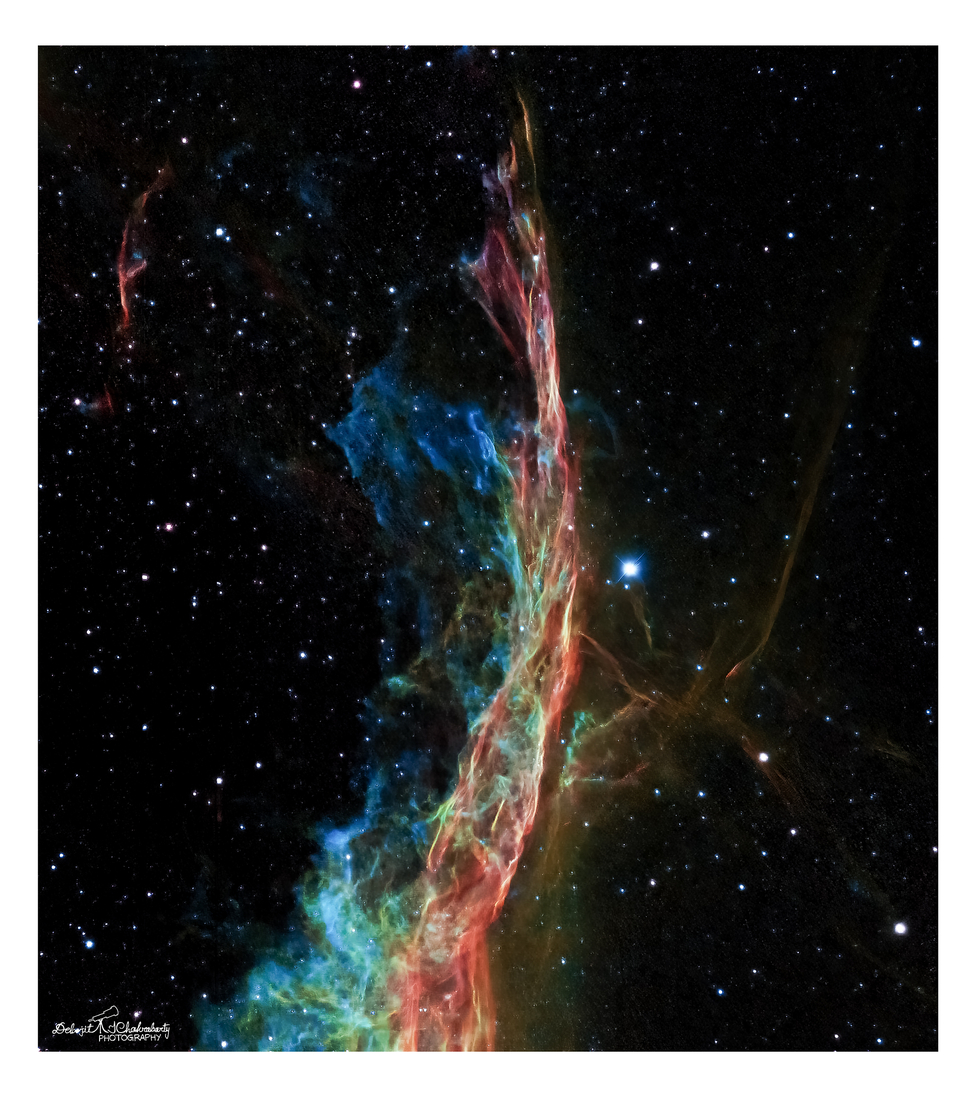NGC6960-Witch Head Nebula
NGC6960-Witch Head Nebula
Witch Broom Nebula: NGC6960
28th March 2021 was a significant day in my life when NASA reprocessed the Veil Nebula and the sheer details mesmerized me and I looked into the image forever and that’s when I decided that my next target will be this request which is also commonly known as “Witch Broom Nebula” which the western segment of the Veil Nebula is cataloged as NGC 6960. Ten thousand years ago, before the dawn of recorded human history, a new light would suddenly have appeared in the night sky and faded after a few weeks. Today we know this light was from a supernova or exploding star, and record the expanding debris cloud as the Veil Nebula, a supernova remnant. Blasted out in the cataclysmic explosion, the interstellar shock wave plows through space sweeping up and exciting interstellar material. Imaged with narrowband filters, the glowing filaments are like long ripples in a sheet seen almost edge-on, remarkably well separated into atomic hydrogen (red) and oxygen (blue-green) gas. The complete supernova remnant lies about 1400 light-years away towards the constellation Cygnus. This Witch's Broom spans about 35 light-years. The bright star in the frame is 52 Cygni, visible with the unaided eye from a dark location but unrelated to the ancient supernova remnant.
.
.
.
While the NASA image is consisting of five different filters, but I opted for 3 narrowband filters.
12*300s of Hs
10*300s of SII and
8*300s of OIII
.
.
.
Instead of the typical Hubble Palette SHO technique, I opted for the OHS combination as the RGB channel. Combined in Pixinsight and processed in Photoshop.
28th March 2021 was a significant day in my life when NASA reprocessed the Veil Nebula and the sheer details mesmerized me and I looked into the image forever and that’s when I decided that my next target will be this request which is also commonly known as “Witch Broom Nebula” which the western segment of the Veil Nebula is cataloged as NGC 6960. Ten thousand years ago, before the dawn of recorded human history, a new light would suddenly have appeared in the night sky and faded after a few weeks. Today we know this light was from a supernova or exploding star, and record the expanding debris cloud as the Veil Nebula, a supernova remnant. Blasted out in the cataclysmic explosion, the interstellar shock wave plows through space sweeping up and exciting interstellar material. Imaged with narrowband filters, the glowing filaments are like long ripples in a sheet seen almost edge-on, remarkably well separated into atomic hydrogen (red) and oxygen (blue-green) gas. The complete supernova remnant lies about 1400 light-years away towards the constellation Cygnus. This Witch's Broom spans about 35 light-years. The bright star in the frame is 52 Cygni, visible with the unaided eye from a dark location but unrelated to the ancient supernova remnant.
.
.
.
While the NASA image is consisting of five different filters, but I opted for 3 narrowband filters.
12*300s of Hs
10*300s of SII and
8*300s of OIII
.
.
.
Instead of the typical Hubble Palette SHO technique, I opted for the OHS combination as the RGB channel. Combined in Pixinsight and processed in Photoshop.
SPECIFICATIONS
Telescope
SPA-2
Camera
FLI ML 16200
Location
Spain
Date of observation
07/06/2021
Filters
narrowband-OHS
Processing
Pixinsight/Photoshop
Credits
244


